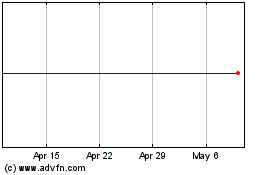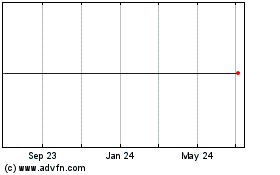By Rhiannon Hoyle
MELBOURNE, Australia--When South32 Ltd. was spun out of BHP
Billiton Ltd., it came with a collection of commodities and assets
its former parent didn't want and many in the market didn't
understand.
One year on, the ugly duckling is growing up.
South32's shares have been rising despite concerns that a
broad-based slump in commodity prices may not be over, as investors
laud its efforts to drive down business costs and boost cash
reserves. Its stock trades up 36% on the start of the year, versus
a 2.5% gain in BHP's shares and a 14% rise in an Australian index
of metals and mining companies.
In an interview, Chief Executive Graham Kerr said South32
undoubtedly endured a rocky first year as commodity prices slid
lower than he would ever have envisaged, but said that spurred
management to fast-track plans to cut spending and strengthen the
balance sheet.
"We have restructured the business faster than people expected
and, as a consequence, in this [difficult price] environment we are
still generating cash every month, which I think has surprised a
few of the doubters," said Mr. Kerr.
The rationale behind the spinoff in May last year was to unleash
the potential of operations including manganese and bauxite mines
that had been hidden within BHP and given little attention or cash
by the world's No. 1 miner by value, which is focused on expansions
in markets such as oil and copper. It was one of the biggest
breakups in corporate mining history.
At the time, critics raised concerns about South32's heavy
reliance on operations in South Africa, where miners have long
grappled with issues including worker strikes and high electricity
costs. Its shares ended last year at half of their debut value.
"Six months' worth of results hasn't totally removed some
people's doubt from their mind," but perceptions about the company
appear to be changing, said Mr. Kerr, adding that he is convinced a
split up was the right move.
South32 will release its first full-year financial report in
August.
The company reported a net cash balance of US$18 million at the
end of March, in stark contrast to competitors who built up
billions of dollars in debt in a spending spree during a decadelong
commodities boom.
"It is good management, it is a good team, and they are clear on
strategy," said George Boubouras, Chief Investment Officer at
Contango Asset Management, which sold out of South32 after the
spinoff but has since bought back in.
To be sure, the company is likely to face continued harsh
headwinds from weak commodity prices, which have capped investor
interest in mining stocks in recent years, he said. Even with the
recent rally, South32's share price hasn't managed to get back to
the 2.45 Australian dollar (US$1.77) peak it reached shortly after
debut. On Thursday, the stock closed at A$1.45.
Some other mining companies that had previously been dumped by
investors have also enjoyed a bounce in recent times, with mining
and trading titan Glencore PLC also up roughly 40% so far in
2016.
Steve Johnson, chief investment officer at Sydney-based Forager
Funds Management, took a small stake in South32 last year after it
listed, but says he bolstered his investment in the miner when the
stock fell to a low around A$0.90 in January.
"It looked crazy at that price, so we decided to take a much
bigger position in it," Mr. Johnson said.
He praised management's focus on spending cuts and said he is
comforted by Mr. Kerr's insistence the company will target "value
over volume."
"It is basic common sense stuff that is badly missing from many
management teams' strategy," said Mr. Johnson.
BHP hasn't been alone in splitting up. Companies in industries
including technology and biopharmaceuticals have pressed ahead with
spinoffs in a bid to squeeze more value from stock holdings.
Global spinoff transactions reached a record US$250.9 billion in
2015, nearly doubling the US$127 billion in deals completed in
2014, according to Dealogic.
With more cash than debt, the company has better fiscal
firepower to buy businesses from struggling rivals than most of its
competitors.
But Mr. Kerr insisted the market remains too focused on that.
"Gone are the days where you have to look through the lens of how
do I become the biggest," he said.
The company does remain interested, though, in Anglo American
PLC's stakes in manganese ventures the pair jointly own, he
said.
Separately, Mr. Kerr said the miner may have to halt output at
its struggling Cerro Matoso nickel mine in Colombia, where it faces
challenges from high costs and the threat of worker strikes.
Write to Rhiannon Hoyle at rhiannon.hoyle@wsj.com
(END) Dow Jones Newswires
June 02, 2016 05:35 ET (09:35 GMT)
Copyright (c) 2016 Dow Jones & Company, Inc.
BHP (NYSE:BBL)
Historical Stock Chart
From Mar 2024 to Apr 2024

BHP (NYSE:BBL)
Historical Stock Chart
From Apr 2023 to Apr 2024
